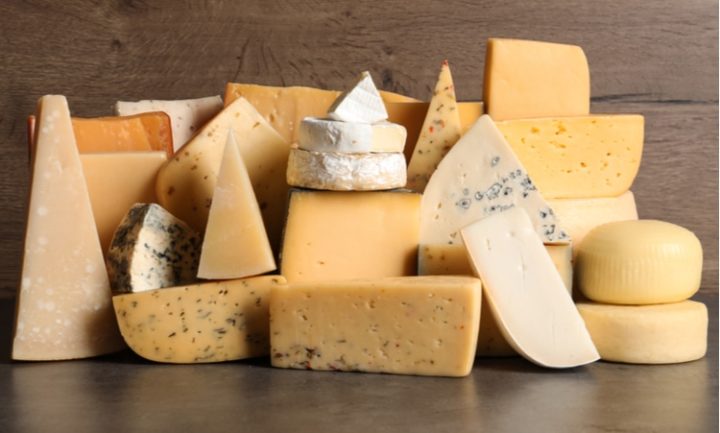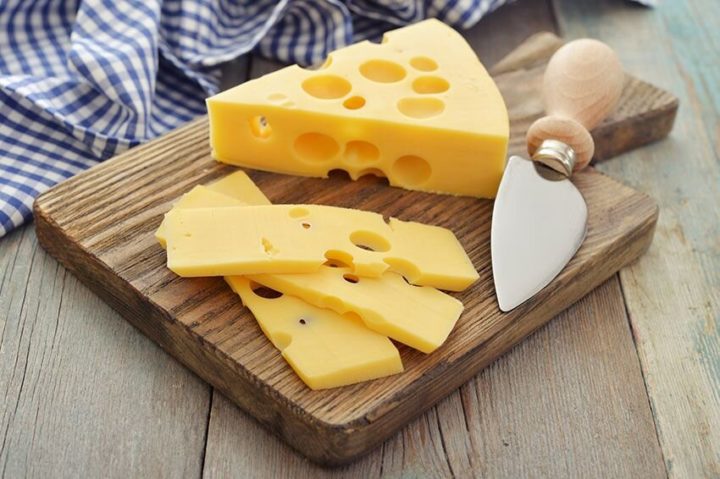Everybody loves cheese. There are so many amazing cheese recipes like you can put cheese in cheesecake, in cheeseburgers, the cheese in macaroni and cheese, and of course, is a key ingredient in an authentic Philly Cheesesteak sandwich. Do you know that there are so many amazing facts about cheese that you didn’t know earlier?
There are actually close to 400 different varieties of cheese available for purchase that vary in taste, texture and colour – even within categories. Can you believe 400 different categories?? Well, there are many other unbelievable facts about cheese that you’ll be surprised to know!!
As popular as this dairy delight may be, many people don’t know a lot about it. So without further ado, let’s take a look at 20 things you probably didn’t know about your favourite food!!
Amazing Facts About Cheese!!

1) There is actually quite an impressive history surrounding cheese production that dates back to around 8,000 BC when herdsmen from Europe began using milk from their mammary glands as a primary food source.
2) The earliest recorded cheese-making was discovered through Ancient Egyptian hieroglyphics depicting workers involved in the cheese-making process and was thought to be around 9,000 years old.
3) The Roman Emperor Claudius II believed that eating cheese before battle made his soldiers stronger and ordered 25 tons of it for his army. Not only is this order impressive due to the fact that most people couldn’t even fathom eating that much cheese today (let alone in one sitting), but also because of the journey this single order must have taken; travelling from Rome all the way to modern-day England. That’s a long haul if you ask me!
4) Cheese falls under one of six major categories: fresh, soft, hard, blue/bleu, spreadable and mould/latex – all of which involve different processes and treatments.
5) The word cheese is derived from the Latin “caseus” meaning “to be dry” or “of poor quality”. This term was used as early as 1000 BC to describe the product but throughout time, it has evolved into something much more exciting than its original definition.
6) There are actually close to 400 different varieties of cheese available for purchase that vary in taste, texture and colour – even within categories.
7) Cheese can also tell you a lot about where it comes from: The curd size (the small pieces of solidified milk proteins and sugars), flavour and colour can all depend on factors such as where it was produced, what the cows were fed and how much milk was used to make it.
8) Different types of cheese can run anywhere from $5 a pound to $100+ per pound depending on the rarity and often, location in which they’re produced. The most expensive cheese ever created comes from Wisconsin and is named Pule Cheese – not just because of its namesake but also because a single ounce of this stuff will cost you about $600!
9) The colour of cheese does not always indicate what kind it is. Only seven varieties (brie, camembert, cheddar, Adam, gouda, Grana- Padano and queso Blanco) are actually classified by their colour when young (i.e. white, yellow or orange).
10) In addition to being a mouth-watering snack, cheese has also been used for centuries as a dye in clothing and an adhesive when glueing things together. It was even made into the paint at one point!
11) The average person eats approximately 30 pounds of cheese per year. That’s quite a bit considering the most popular varieties only contain about 300 calories per serving!
12) Aged cheeses have more carcinogenic properties than non-aged cheeses due to the presence of tyramine and phenylethylamine (both known carcinogens found in many types of food).

13) Almost all cheese contains some form of lactose (the sugar created as a by-product of making cheese), which can cause digestive issues for lactose-intolerant people. Luckily, most varieties today contain anywhere from 90% – 99% less lactose than they did back in the day due to modern production methods.
14) It’s estimated that there are around 2,000 different species of milk-producing mammals out there and only 20 species have been used to create milk for humans over time. However, these mammals produce vastly different kinds of milk with many containing unique types of fat not found in cow’s milk. This is why goat cheese often tastes much richer than its cow counterpart even if it contains almost the same amount of calories per serving!
15) Cheese doesn’t always have to smell bad; it can be quite delicious in some cases. It’s believed that the way cheese smells (or tastes) has a lot to do with the environment in which it was aged or stored. If you make your cheese pasturage, for instance, there aren’t many microbes around so the dairy product will tend to taste milder than those made from milk of farm animals where more bacteria is allowed to grow over time.
16) Almost all cheeses that are mass-produced today start out as curds resulting in a moist and dense texture once cut into small cubes. However, not all types of cheese are pressed together – some are just moulded by hand after bringing!
17) Cheese can be made from almost any mammal’s milk and is also often mixed with other types of milk (such as goat’s milk). Most types of cheese contain anywhere from 20% to 60% butterfat.
18) Cheese may not always be yellow; it can actually take on a wide range of colours depending on its age and ingredients added during production! Yellow #5 was actually created by accident back in the 1960s when Cheddar cheese was dyed orange by an unplanned chemical reaction.
19) Blue cheese gets its distinctive taste, aroma and colour from spores produced naturally by the moulds used to create these strong-flavoured varieties. Just one drop contains around 500 million spores so make sure your cheese is properly sealed after you’ve opened it from its original packaging!
20) Cheese production dates as far back as 7,500 BC and has been a part of almost every culture on Earth since then. In fact, the word “cheese” comes from Latin caseus which means “from a wheel.”
Wrapping Up:
So these were some of the amazing facts about cheese!! Hope you enjoyed learning these cheese facts!! If you liked the information shared in the post do share it with your friends!!
Until next time, Say Cheese!!!
